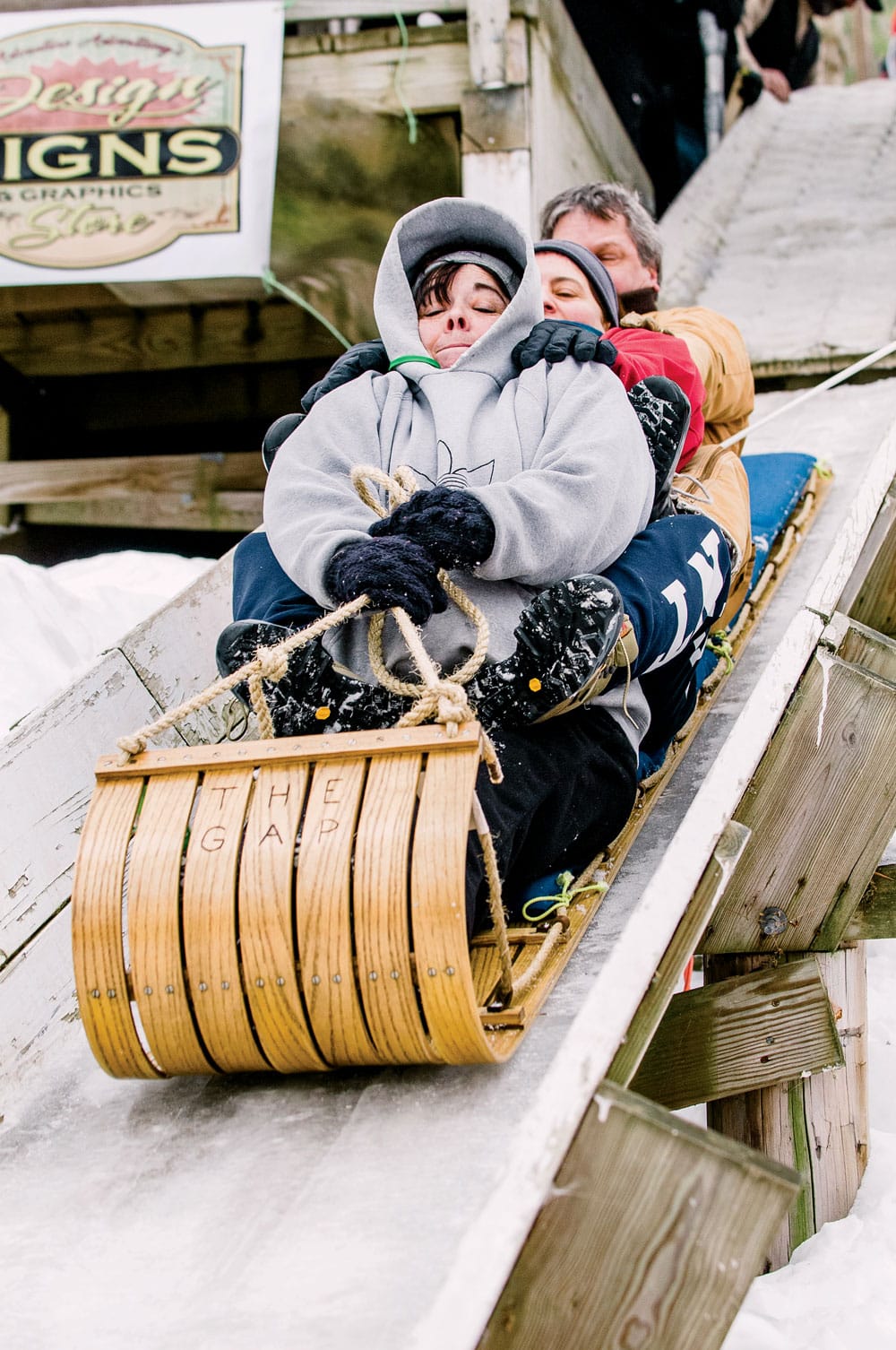Camden Toboggan Chute | Up Close
The Camden toboggan chute in Camden, Maine is one of North America’s biggest, and the only one of its kind left in New England.

Coffee By Design | Portland, Maine
Photo Credit : Katherine KeenanThe Camden toboggan chute — formally named the Jack R. Williams Toboggan Chute — is one of North America’s biggest, and the only one of its kind left in New England. It’s open to the public on most winter weekends, holidays, and school vacation days, weather permitting.
Camden Toboggan Chute Trivia
Long before Europeans arrived here, the Indigenous peoples of the northernmost areas of North America used handcrafted toboggans to transport people and goods across the snow. The word toboggan likely originates from the Mi’kmaq (tobâkun) or the Abenaki (udãbãgan) word for “sled.”
—
Because they were meant to be pulled down snowshoe trails, early toboggans could be 8 or 10 feet long, but only about 1 foot wide. Toboggans were sometimes pulled by snow dogs, but most often by a man or woman wearing a chest harness.
—
Early European settlers adopted toboggans for transport, but soon realized that they had recreational value as well.
—
Tobogganing became a popular sport in the late 1880s. Three modern Olympic sports were born out of downhill tobogganing: bobsledding, luging, and skeleton racing.
—
The 31st annual U.S. National Toboggan Championships were held Feb. 11–13, 2022, at the Camden Snow Bowl on Ragged Mountain in Midcoast Maine. More than 380 entrants competed in front of thousands of spectators.
—
Despite its lofty title, the championships are open to anyone who signs up. The event is believed to be the only organized wooden toboggan race in the country, and perhaps in the world.
—
For folks who bring their own toboggans, the fee for using the chute is just $10 per person per hour. You can also rent a toboggan, handcrafted by the Camden Toboggan Company from native ash, at the Snow Bowl.
—
The 440-foot chute is 2 feet wide and has a vertical drop of more than 70 feet, propelling toboggans at speeds of up to 45 mph. Sleds that stay upright stop by plowing through the snow on Hosmer Pond.
—
Jack Williams, who was 9 when the Snow Bowl first opened, has said that his 25-cent membership to the Camden Outing Club allowed him to ride his toboggan all winter long.
—
Camden’s original chute didn’t last long, as the salty Penobscot Bay air caused rapid corrosion. It had been out of service for many years when it was rebuilt by the U.S. Coast Guard in 1954. By 1964, the chute had once again fallen into disrepair.
—
The chute sat in ruins until 1990, when Williams, by then a successful businessman and a prominent member of the Camden community, headed up a project to rebuild it. It was dedicated as the Jack R. Williams Toboggan Chute in January 1991. Until he passed away in 2018, Williams would still ride the chute at least once every winter, as the flag bearer and first rider at the championship event.
—
On February 24, 1991, the first national championships were held at the Snow Bowl, drawing a small but enthusiastic crowd of about 100 Camden folks. The event was conceived by the Parks & Rec department as a winter amusement for locals, but as word spread, people from all over the country started signing up. In recent years, the championships have raised as much as $90,000, which goes toward the Snow Bowl’s operating expenses.
—
Many participants build their own sleds and design their own uniforms—or costumes. So you might see a toboggan loaded with pirates or Muppets or football players whiz by.
LEARN MORE: camdensnowbowl.com/toboggan-chute
This post was published in 2016 and has been updated.







